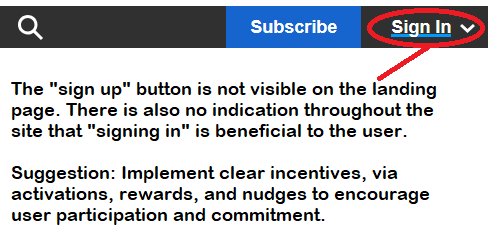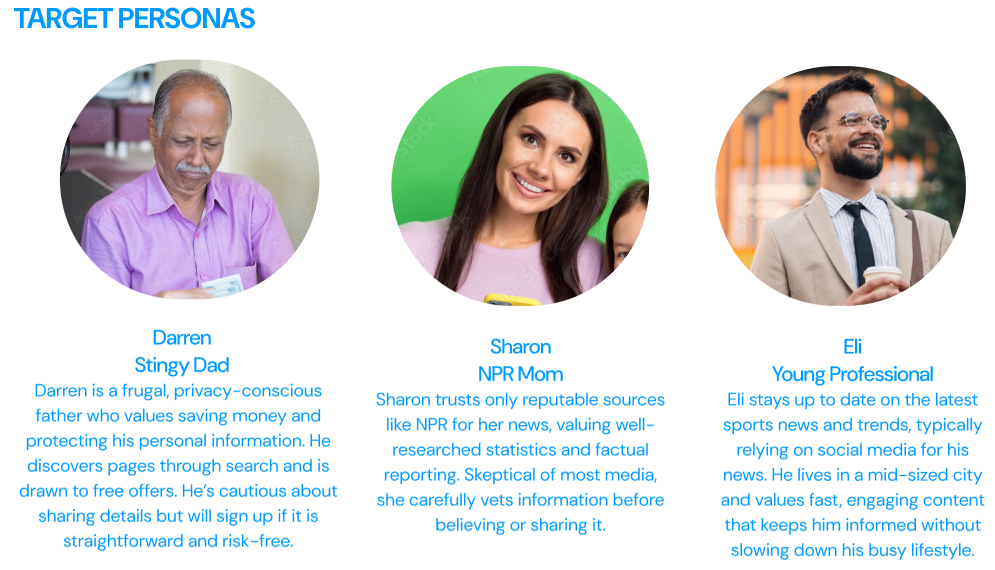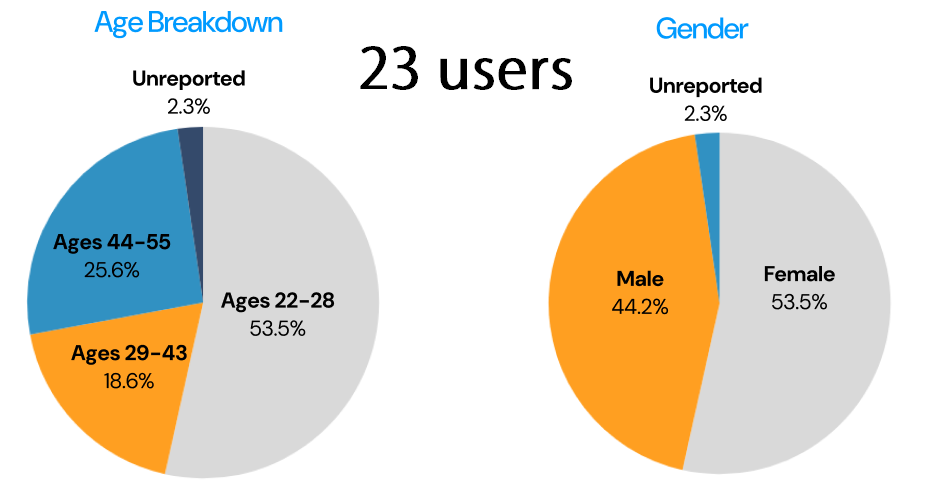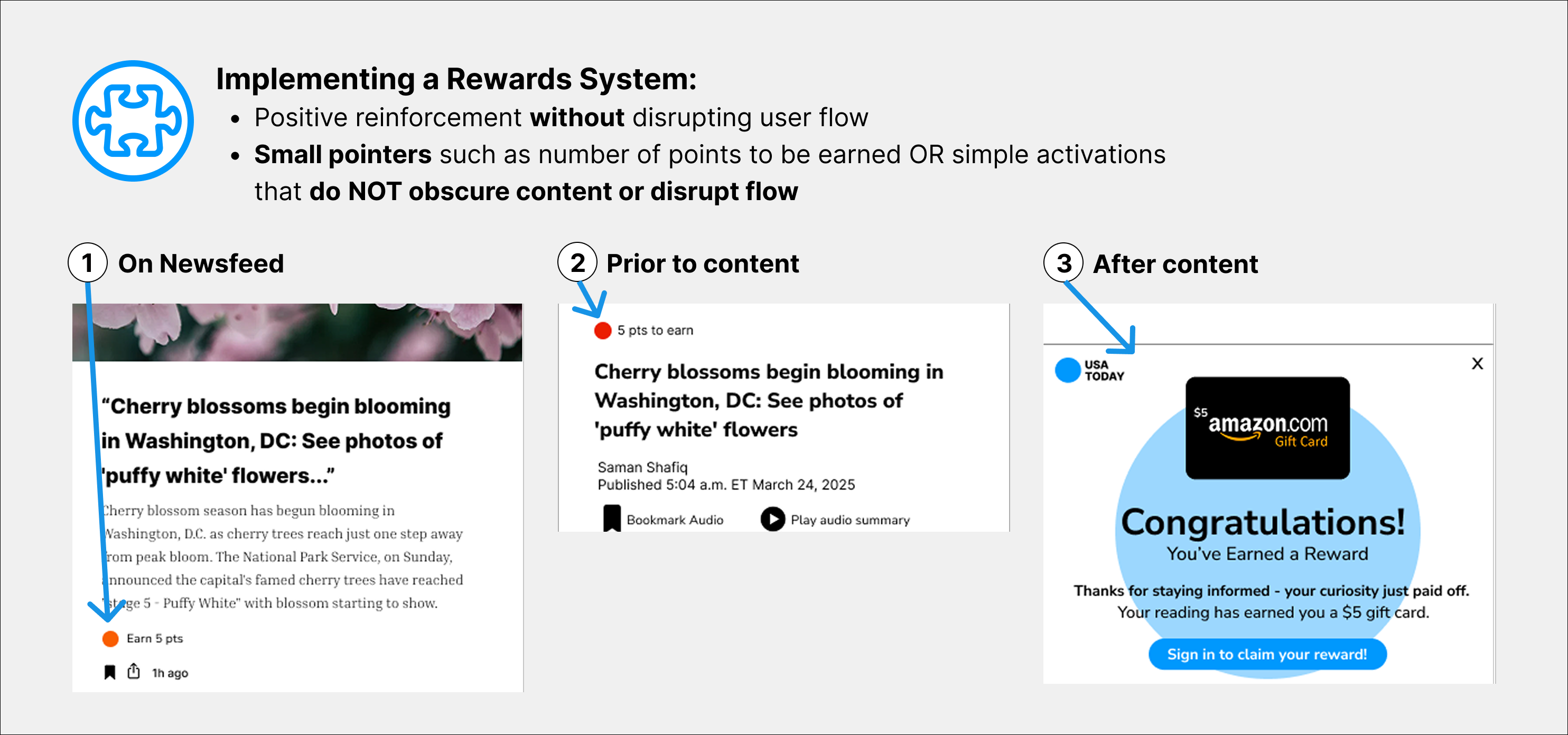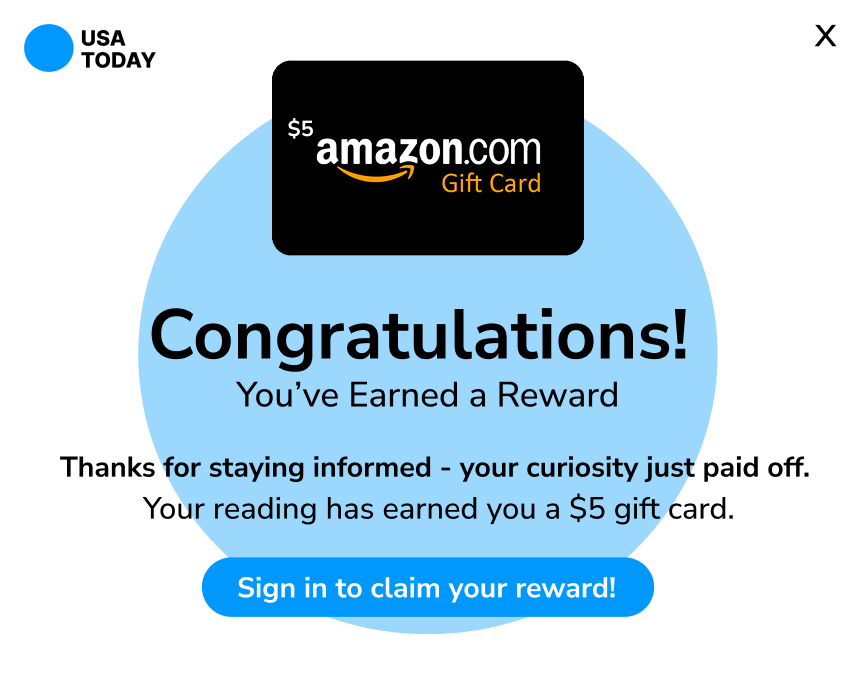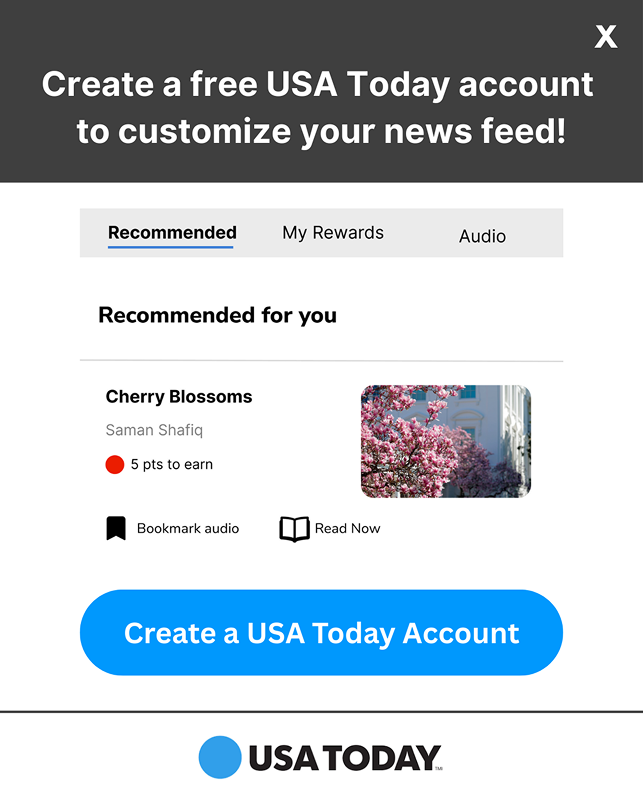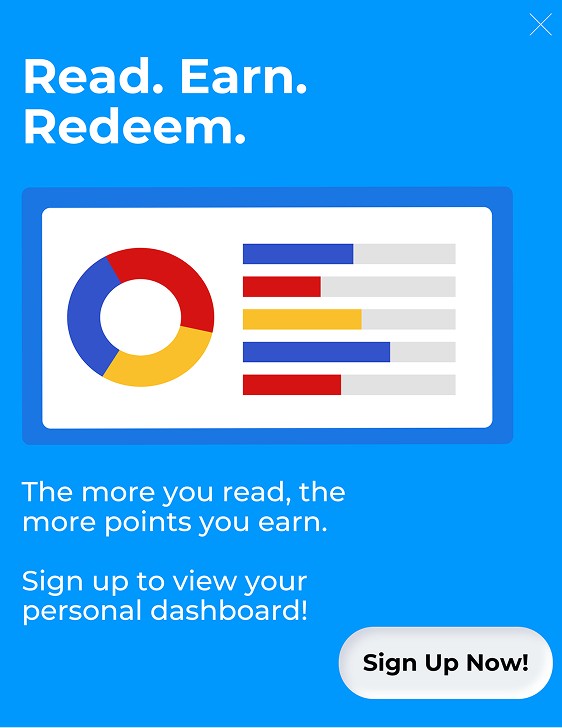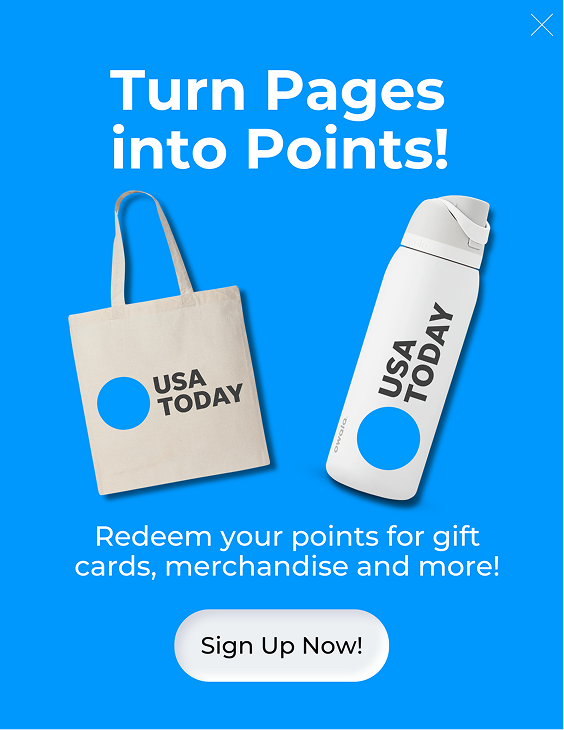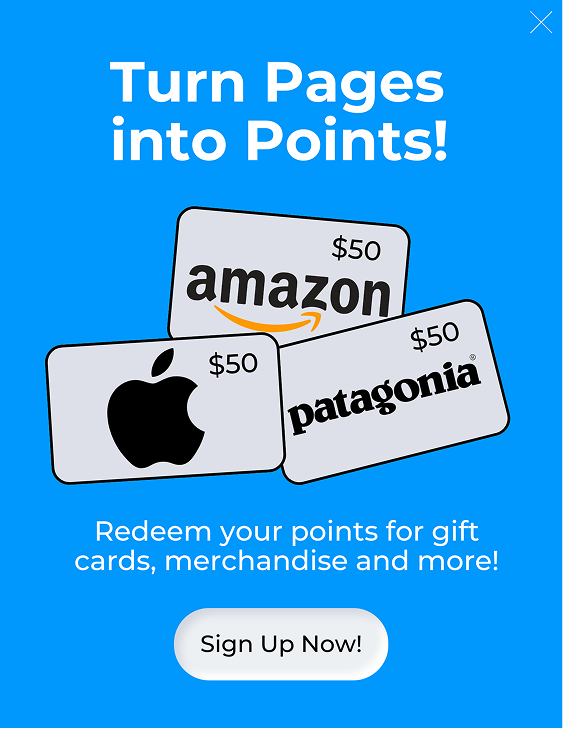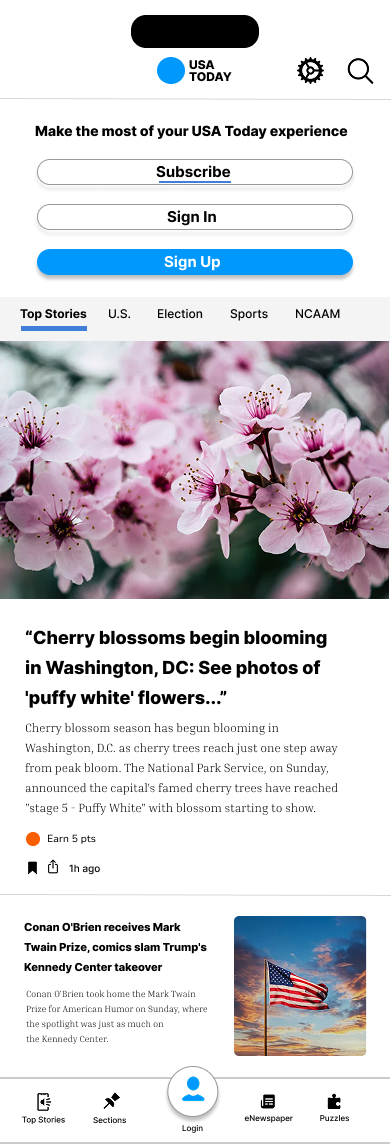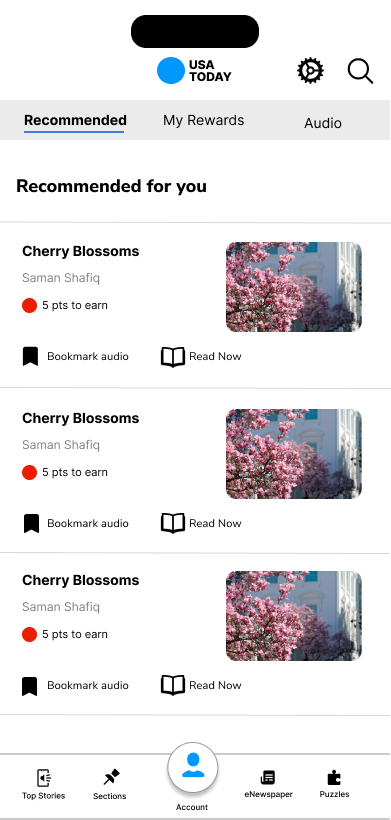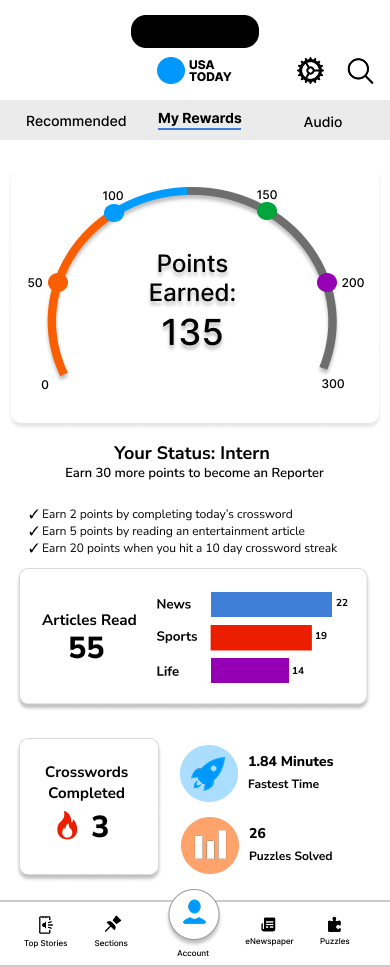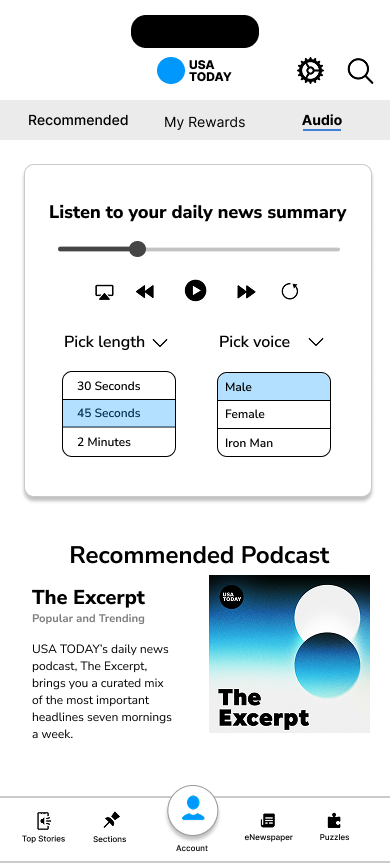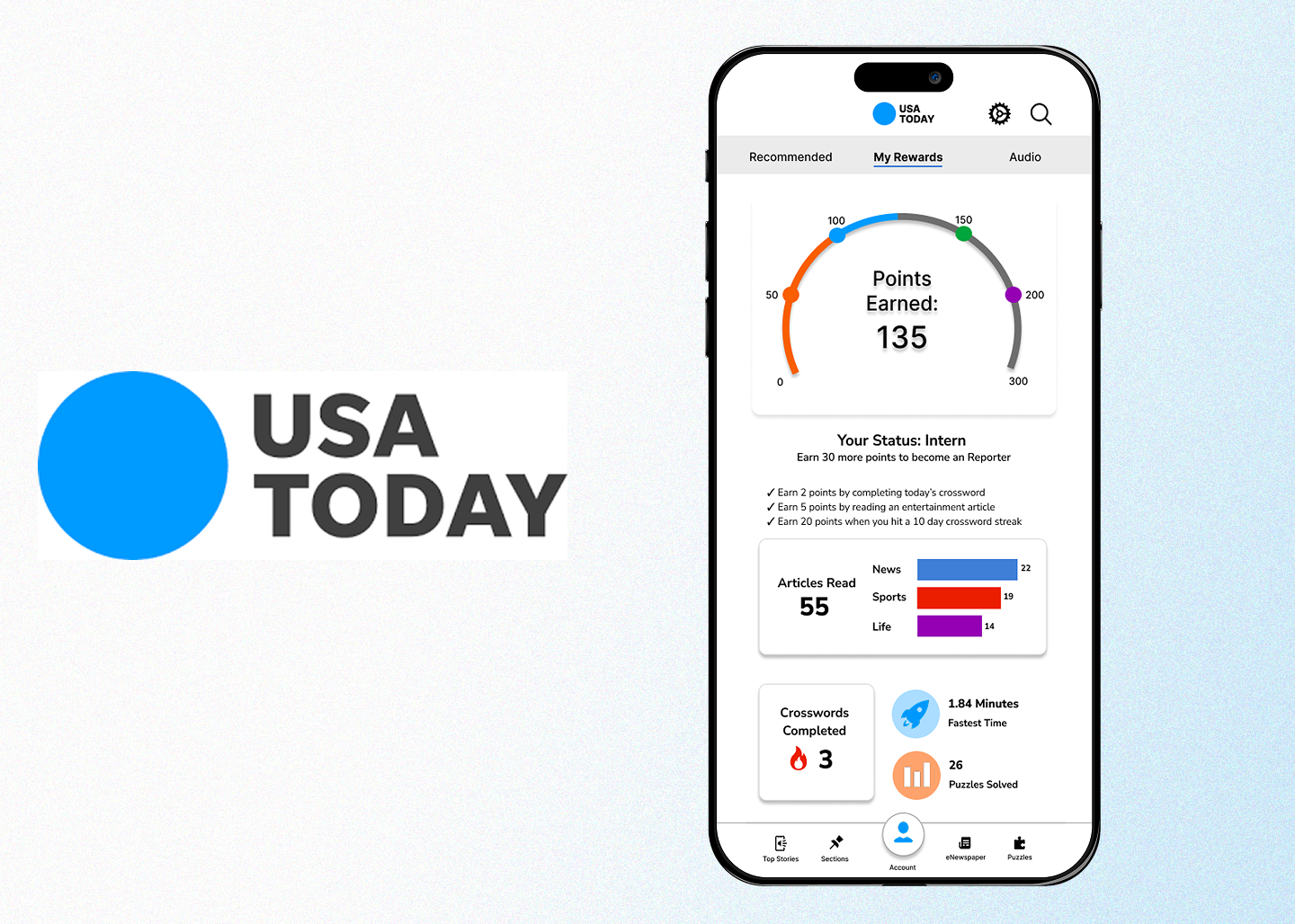
USA Today: A User Retention Strategy
Developing a product strategy and design for rewards and AI features.
| Role | Duration | Project Type | Tools/Skills |
|---|---|---|---|
| UX Researcher and UI Designer | 4 Months | Partnership | Product Management, Competitive
Analysis, Figma, Qualtrics Surveys |
Summary
I was tasked with developing a product strategy to boost user retention on Gannett's USA Today App. Gannett's customer experience team outlined a major issue with the product's user retention: only 2% of users were signing in when accessing the app. To address this issue, I completed competitive analyses, design thinking workshops, and conducted a user research study to ideate solutions. I developed a rewards system with a projected 12% increase in user retention, then presented this solution to the Gannett customer experience team.
